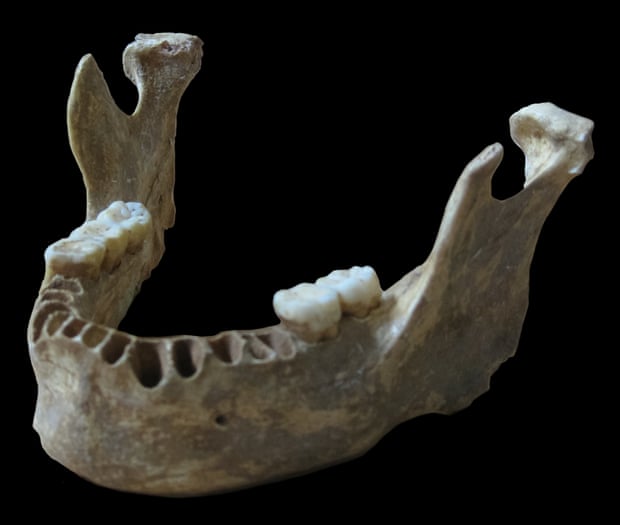The first modern humans to arrive
in Europe did not wait long to have sex with Neanderthals, according to experts
in ancient DNA.
Tests on the remains of a man who
lived in Europe about 40,000 years ago found he had two to four times more
Neanderthal DNA than any other modern human tested. He inherited the DNA when
an ancestor had sex with a Neanderthal about 200 years earlier, or four to six
generations back in his family tree.
Though present day humans have at
most only a few percent Neanderthal DNA each, when added together, the global
population carries about a fifth of the Neanderthal genome.
Genetic tests show that most
Neanderthal DNA was rapidly lost from the modern human genome. One theory is
that mixed children grew up to be less fertile, or were less likely to reach
fertile age, meaning their DNA vanished quickly from the gene pool.
 In the latest study, scientists
used a dentist’s drill to remove a small amount of bone for genetic tests. The
results, reported in Nature, are remarkable. The man had 6-9% Neanderthal DNA,
far more than people alive today. But the amount was not the only surprise. The
Neanderthal DNA was present in large chunks, meaning he had a Neanderthal
ancestor in his recent past. Half of one entire chromosome was pure Neanderthal.
In the latest study, scientists
used a dentist’s drill to remove a small amount of bone for genetic tests. The
results, reported in Nature, are remarkable. The man had 6-9% Neanderthal DNA,
far more than people alive today. But the amount was not the only surprise. The
Neanderthal DNA was present in large chunks, meaning he had a Neanderthal
ancestor in his recent past. Half of one entire chromosome was pure Neanderthal.
A great discovery that will help
to understand better the human´s genome because it was unknown until today that
our genome contains Neanderthal genes, even if it is that little.
Read more at: http://www.theguardian.com/science/2015/jun/22/my-neanderthal-sex-secret-modern-europeans-great-great-grandparent-link


